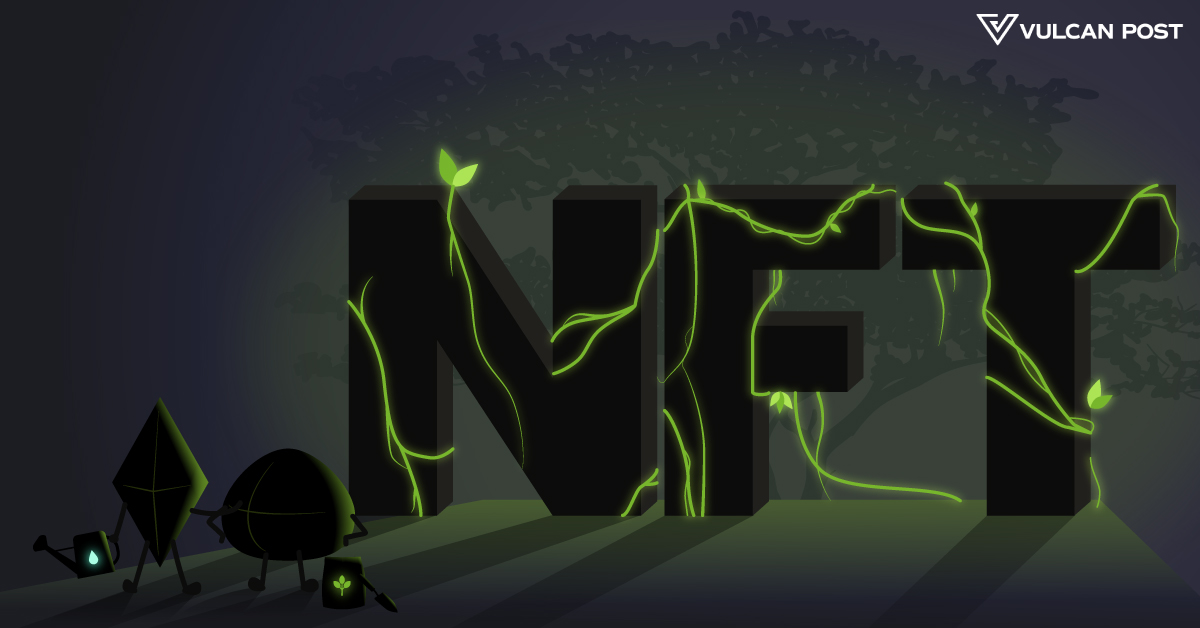Since the first NFT, called Quantum, was minted on the Namecoin blockchain on May 3, 2014, the technology grew in popularity, reaching up to 50,000 NFT transactions per week in 2021.
In order the verify these transactions, blockchain platforms employ miners that help validate the block consisting of a list of transactions and a block header.
After the verification process, the miners will then have to solve a computationally intensive math problem to add the block onto the blockchain, which consumes electricity.
To give an idea of how much electricity is required, minting a single NFT on Ethereum, the most popular blockchain platform for NFTs, will consume roughly 84kWh of electricity, which is enough to power a typical household for almost two days.
With this much electricity consumed daily, the environment is impacted negatively as fossil fuels are needed to generate electricity, releasing pollutants into the atmosphere.
This is why NFTs, and by extension, blockchain technologies, are often portrayed in a negative light by eco-conscious activists. Despite this, there are actually ongoing efforts being made by stakeholders to reduce the technology’s environmental impact.
1. Improving the blockchain platform’s efficiency
One of these efforts include making NFT minting and transactions more efficient.

For example, the developers of Ethereum are looking to switch from a proof-of-work consensus model to a proof-of-stake consensus model, which is claimed to help improve electricity consumption by up to 99.95%.
To elaborate further, unlike proof-of-work where miners use equipment and electricity to participate and create a new block in the blockchain, proof-of-stake involves validators utilising their digital coins or tokens as collateral to secure the network.
Validators, similar to miners, are rewarded for their contributions if they determined that the transactions in the block are accurate. Should there be any discrepancy in the transaction, the validator will be penalised and they lose some of their collateral.
Furthermore, they also plan to upgrade the blockchain platform to ETH 2.0 in 2022, increasing the number of transactions by more than 2,000 times from 45 transactions per second (TPS) to 100,000 TPS while remaining as efficient as possible with the new consensus model.
To put it simply, ETH 2.0 will be able to go through more transactions on a block at one go, cutting down the number of validations needed, and lowering electricity consumption.
2. Creating innovative and scalable solutions
Another thing that’s actively being developed are Layer 2 scaling solutions like Optimistic Rollup (OP Rollup) and Zero-Knowledge Rollup (ZK Rollup).
These solutions help improve transactional efficiency by processing and compressing blockchain transactions together before submitting them to the main Ethereum chain, allowing it to process more in a short amount of time.
Unfortunately, they are not without their drawbacks. Solutions built around the OP Rollup framework are compatible with most decentralised applications, have lower gas fees, and are easier to implement and develop, but the withdrawal time will take exactly seven days instead of a couple of minutes on average.
On the other hand, ZK Rollup solutions have a significantly lower withdrawal time (about a few minutes), lower gas fees, and they’re able to handle more transactions than OP Rollup.
However, they are not compatible with most decentralised applications, and are much harder to develop and implement.
To address the shortcomings of each of these solutions, Zero-Knowledge Ethereum Virtual Machine (zkEVM) is currently being developed to be highly compatible, easy to work with, able to facilitate more transactions, and with a quicker withdrawal time.
3. The creation of more energy-efficient blockchain platforms
Another way that NFTs can be more eco-friendly is by taking advantage of more energy-efficient platforms, like Solana, Algorand, and more.
These platforms take advantage of the proof-of-stake consensus, which is significantly faster and energy-efficient. Some of these platforms like Brokoli and WAX would even go as far as planting a tree for every NFT purchased.

Irsyad, co-founder of Pentas.io, an NFT marketplace seeking to empower digital culture and heritage noted that having their platform on the Binance Smart chain, a blockchain platform that uses a proof-of-stake protocol, is crucial in keeping gas fees low, which reduces their carbon footprint.
-//-
While NFTs are not necessarily eco-friendly at this moment in time, new solutions are being developed daily to address the shortcomings of blockchain technologies.
In addition to that, it also helps make them more reliable, faster, and more efficient, reducing electricity consumption in the long run.
As Irsyad has pointed out, “We need to keep in mind the context and purpose of the technology. It was similar to the internet when it was first introduced, which met with some backlash even when it was still in its infancy.”
Personally, I feel that this situation is akin to cars when they were first introduced. They were quite inefficient back then, consuming a litre of petrol for every four kilometres travelled compared to modern vehicles, which today average around 20 kilometres on a litre.
As blockchain technology matures, I’m confident that it will follow a similar route where it becomes progressively more efficient.
Featured Image Credit: Brokoli Network









